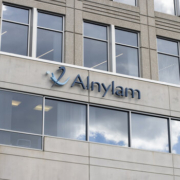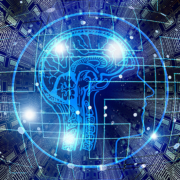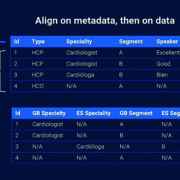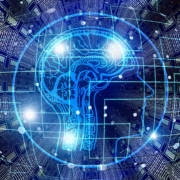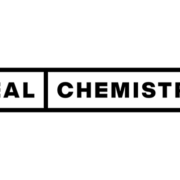Innovation changing the future of scientific research
Innovation changing the future of scientific research
A Q&A with Alister Campbell, VP, global head of science and technology at Dotmatics.
Med Ad News: What developments are impacting the R&D process?
Alister Campbell: Innovation is born out of experimentation. Nearly every major breakthrough in science that has advanced human well-being started with a question, and was uncovered through an often tedious and arduous experimentation process. But the experimentation process in R&D has grown in complexity, complicated not by a lack of ingenuity, but by the failure of technology to support the ideas of our scientific community. The reality today is that it takes on average 10-20 years to develop and bring a drug to market in the United States—and only 5% of compounds from the discovery stage ever launch. According to Accenture, the average cost to develop a new drug is between $2.6 and $6.7 billion.
We know that scientists are being pushed to innovate rapidly, consistently deliver, improve ROI on the capital investments made, implement adaptable processes, collaborate more broadly, and convert data into insights. The onset of COVID only highlighted the need for rapid acceleration of scientific research and collaboration to produce faster, more successful breakthroughs. Yet too often scientists have found that data science has not matured to the extent of its older sibling, science data, which has no shortage of information and insight to share. In a recent study, 80% of scientists said that the workarounds currently required to get data into meaningful outputs are negatively impacting their work and almost 70% reported compromised decision-making because of this.
We need to take the cost of bringing each new drug to market from billions of dollars to millions of dollars, and enable life saving drugs to get to market faster and in a way that consumers can afford. To do that, the R&D process needs to go through a digital transformation, which means focusing on digitizing workflows and harmonizing scientific data.
Med Ad News: What are some of the ways that technologies such as AI have been helping scientists go faster in developing medical breakthroughs?
Campbell: Despite the buzz around artificial intelligence (AI), most industry insiders know that the use of machine learning (ML) in drug discovery is nothing new. For more than a decade, researchers have used computational techniques for many purposes, such as finding hits, modeling drug-protein interactions, and predicting reaction rates. Implementing AI in drug discovery requires three main things: reasonable expectations, clean data, and collaboration.
AI can be a valuable part of a company’s larger drug discovery program. But, for now, it’s best thought of as one option in a box of tools. Clarifying when, why, and how AI is used is crucial, albeit challenging. Interestingly, investment has largely fallen to companies developing small molecules, which lend themselves to AI because they’re relatively simple compared to biologics, and also because there are decades of data upon which to build models. There is also great variance in the ease of applying AI across discovery, with models for early screening and physical-property prediction seemingly easier to implement than those for target prediction and toxicity assessment .
Secondly, AI requires good data, and lots of it. But good data are hard to come by. Publicly available data can be inadequate, forcing companies to rely on their own experimental data and domain knowledge. Unfortunately, many companies struggle to capture, federate, mine, and prepare their data, perhaps due to skyrocketing data volumes, outdated software, incompatible lab systems, or disconnected research teams. Success with AI will likely elude these companies until they implement technology and workflow processes to support their needs.
And finally around collaboration, companies hoping to leverage AI need a full view of all their data, not just bits and pieces. This demands a research infrastructure that lets computational and experimental teams collaborate, uniting workflows and sharing data across domains and locations. Careful process and methodology standardization is also needed to ensure that results obtained with the help of AI are repeatable. Key industry players are also collaborating to help AI reach its full potential, making security and confidentiality key concerns. For example, collaborative initiatives, such as the MELLODDY Project, have formed to help companies leverage pooled data to improve AI models.
Med Ad News: Please discuss Dotmatics’ vision for a new Lab of the Future that is anticipated to change the future of scientific research. What does the future of scientific research look like?
Campbell: The industry has been missing an integrated R&D platform with the depth, breadth, and connectivity to the best scientific applications to help solve these complex data challenges in labs. That means scientists working on life-saving discoveries from cancer research to food scarcity struggle with their data in silos, and they are using dozens of favorite apps to aid them in the process.
That’s where Dotmatics comes in. We give scientists the first true end-to-end solution for scientific R&D. And based on research we’ve conducted with a third party, we’re finding that by using that technology, scientists are realizing up to 70% reduction in time spent on data integration and analysis, and up to 50% reduction in time spent on documentation. As a result, they can dedicate more of their time and energy to their research.
The roots of Dotmatics’ story comes from multiple startup science application companies that were created for scientists, by scientists, to help address issues they were dealing with in the research and development process. In 2021, all of these solutions were brought together under one roof of Dotmatics through its merger with Insightful Science. The result is an 800-person-strong team, with 65% of that workforce dedicated to R&D. The team is unified around creating a core scientific platform, one that includes functionality like ELN, LIMS, Data Management, and Screening, and that is integrated with market-leading specialized applications. In the biologics world that might support field work on Antibody Discovery or CAR-T Cell Therapy, while in Chemistry, that might be Oligos or DNA-encoded Libraries.
From developing new, personalized and preventive patient treatments, or using algae for clothes and plastics, through to reversing climate change, today Dotmatics is helping to solve these challenges for companies like BAS-F, Merck, and Novartis Pharma AG and research universities like MIT and Oxford. Companies that own the cleanest, best annotated data to power their AI analytics and decision-making will be the best positioned to succeed. This is borne out by the 2 million plus scientists in 10,000 organizations around the world, including 70 of the top 100 pharma companies, that trust Dotmatics to help them in a shared mission to create a healthier, cleaner, safer world.
Med Ad News: How is Dotmatics working with leading biopharma companies and research universities to transform the industry?
Campbell: One example of this is its help with environmental science and sustainability research into making plastics and clothing from algae. Dotmatics’ solutions support Checkerspot, a materials innovation company headquartered in Alameda, California. Checkerspot’s mission is to expand the palette of molecular building blocks for high performance and sustainable materials, moving away from finite materials such as fossil fuels and instead making high performance materials from biomanufacturing microalgae oil. By unlocking the genetic code of microalgae, Checkerspot is able to unlock a diverse set of building blocks that nature has to offer. But to create high performance materials using nature’s building blocks requires that specs be dialed in at the molecular level.
Dotmatics has supported Checkerspot’s ground-breaking research by giving its researchers the tools they need to accelerate R&D. Jesus Barajas, Ph.D, scientist II at Checkerspot, said, “Geneious by Dotmatics is a lens for Checkerspot to look at the genetic blueprint for how fatty acids and lipids are made, and with that data further engineer proteins to put back in algaes to make new materials that can go into consumer goods such as clothing, plastics, or paint.”
A separate example is in the development of life saving therapeutics. Dotmatics’ Biologics Discovery Workflow enables life science companies with multidisciplinary and cross-organization research teams to easily and collaboratively capture and track high volumes of data and processes in order to make the best-informed decisions in bringing potential new therapies to patients quicker and cheaper. The solution has greatly improved the speed of discovery and research at the Cancer Research UK Cancer Therapeutics Unit at The Institute of Cancer Research (ICR) in London.
Before the software’s deployment, many scientists at The Cancer Therapeutics Unit used an Excel spreadsheet to copy and paste raw values from Thermal Shift Assay readers output before evaluating the plots to set the minimum/maximum. They would then copy and paste a subset of that data into GraphPad Prism, before copying the results back into the Excel spreadsheet for further analysis. While this is a common practice the manual input is incredibly ineffective. In addition to the inevitable data errors creeping in as a result of copying and pasting, and manually entering data, the half a day taken to process that data had become a bottleneck for the Unit. The solution was to define and implement a standardized method that would eliminate errors and streamline the workflow. By deploying Dotmatics’ tools, each step of the previous process is now handled a standard workflow within one program and completed in less than an hour.
Med Ad News: What trends are expected to ramp up during 2023 and/or beyond?
Campbell: The big question is how do you go from being data driven, to being data led? Because the world is moving to a predictive nature. The silver-lining of that future is the advancements in computational power creating avenues of possibility for AI, machine learning, and quantum computing. Scientists have looked forward to the promise of a digitally transformed lab, one that offers unified solutions for connecting the full lifecycle of science, data, and decision-making, and doing it in an open way, sharing insights across applications and data management platforms.
We know that today science is multimodal. Scientific domains are more complex. Data must be able to flow between areas, applications, teams, and organizations. Ultimately innovation and transformation are as much about data science as it is about science data. And it’s the harmonization of those two things that will drive the transformation we need.




